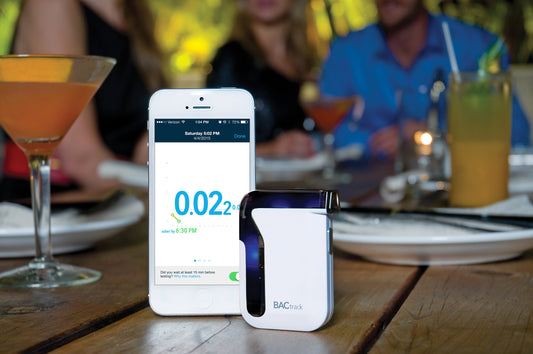DUI Statistics
DUI Statistics
DUI stats tell a grim story that we’ve all heard before: Drunk drivers are much more likely to cause car accidents, highway injuries, and vehicular deaths than non-impaired drivers. Yet despite the sobering headlines and untold heartache, people still get behind the wheel of their vehicles after drinking too much. This is startling, not only because of the avalanche of evidence that is at this point commonplace, but also because preventing these tragedies is as simple as raising awareness of one's alcohol intake. Perhaps no instrument does this as quickly and effectively as a BACtrack Breathalyzer. By using one, an untold number of lives could be saved.
According to the Federal Bureau of Investigation (FBI), over 1.4 million drivers were arrested for driving under the influence of alcohol or narcotics in 2010. Unfortunately, that astonishing figure represents just 1% of the 112 million adults in the U.S. who self-report episodes of alcohol-impaired driving each year.1
Highway fatalities resulting from alcohol-impaired drivers continue to be so predictable that many state highway patrol departments issue fatality estimates before certain holidays that prove to be all too accurate.
Amidst the gloom, a silver lining: As a result of coordinated efforts by anti-drunk driving organizations such as Mothers Against Drunk Driving (MADD), businesses, and government agencies, public awareness of the dire consequences of drunk driving has increased while alcohol-related crashes have steadily decreased. Teen drinking and driving is also on the decline. However, highway fatalities resulting from alcohol-impaired drivers continue to be so predictable that many state highway patrol departments issue fatality estimates prior to certain holidays that prove to be all too accurate.
Since 2002, all 50 states consider drivers to be alcohol-impaired if their blood alcohol content or concentration (BAC) is .08% or higher, known legally as driving under the influence (DUI), driving while intoxicated/impaired (DWI), or operating a motor vehicle while intoxicated or under the influence (OWI).
The following DUI statistics reveal the extent of drunk driving and its consequences in the United States.
- About one in three people will be involved in a drunk driving crash during their lifetimes.2
- Every day, 28 people die as a result of drunk driving crashes on average.2
- In 2010, 10,228 people died in drunk driving crashes – one every 52 minutes – and 345,000 were injured.2
- In 2010, people killed in alcohol-impaired driving crashes accounted for nearly one-third (31%) of all traffic-related deaths.2
- An average, a convicted drunk driver has driven drunk 80 times before his or her first arrest.3
- Drivers with a BAC of 0.08% or higher who were involved in fatal crashes were four times more likely to have a prior conviction for DUI than were drivers with no alcohol in their system.3
- In 2010, 31% of all drivers involved in fatal crashes on weekends were alcohol-impaired, compared to 16% during weekdays.2
- Alcohol impairment among drivers involved in fatal crashes in 2010 was four times higher at night than during the day – 37% compared to 9%.2
- If all 17 million people who admitted to driving drunk in 2010 had their own state, it would be the fifth largest in the U.S.2
- The highest percentage of drunk drivers involved in fatal crashes during 2010 was for drivers ages 21 to 24 (34%), followed by ages 25 to 34 (30%), and ages 35 to 44 (25%).2
- Of 1,210 traffic deaths among children ages 14 and younger in 2010, 211 (17%) involved an alcohol-impaired driver.2
- In 2010, the percentage drivers by vehicle involved in fatal crashes who had a BAC level of .08 or higher was 28% for motorcycle riders, 23% for passenger car drivers, and 22% for drivers of light trucks. The lowest percentage of drivers involved in fatal crashes who were legally impaired was for large trucks at 2%.2
- At any BAC level, the risk of being involved in a crash is greater for young people than for older people.4
- Car crashes are the leading cause of death for teens, and about one-third of those are alcohol related.2
- Teens were responsible for approximately 2.4 million episodes of drinking and driving a month in 2011, and some engaged in the dangerous behavior more than once a month.3
- The percentage of teens in high school (ages 16 and older) who drove when they had been drinking alcohol decreased by 54% between 1991 and 2011, and nine out of 10 high school teens (aged 16 and older) did not drink and drive during 2011.3
- High school boys ages 18 and older were most likely to drink and drive (18%), while 16-year-old high school girls were least likely (6%).3
- Eighty-five percent of teens in high school who reported drinking also reported binge drinking, meaning that they consumed five or more drinks during a short period of time.3




